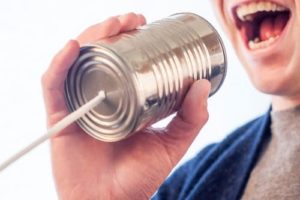 I’m a researcher, but I’m also a nurse. Nurses are used to talking to people about complex health topics in plain language. We are often the ones helping patients wade through jargon, numbers, and data they don’t have the experience to interpret otherwise. Many nurses can do this brilliantly on the individual level – nurse to patient. As scientists, though, we have a responsibility to translate specialized knowledge on a larger scale, and most of us are ill prepared to take on this task. In graduate school, we are taught how to present our findings to other scientists, but many of us are at a loss as to how to talk to people without a science background about our work.
I’m a researcher, but I’m also a nurse. Nurses are used to talking to people about complex health topics in plain language. We are often the ones helping patients wade through jargon, numbers, and data they don’t have the experience to interpret otherwise. Many nurses can do this brilliantly on the individual level – nurse to patient. As scientists, though, we have a responsibility to translate specialized knowledge on a larger scale, and most of us are ill prepared to take on this task. In graduate school, we are taught how to present our findings to other scientists, but many of us are at a loss as to how to talk to people without a science background about our work.
In health-related sciences our research findings are often relevant to the general public. Sometimes, there are enormous public health implications. An example from my field of study is the identification of women’s symptom characteristics when they have acute coronary syndrome (ACS). Communicating common symptom patterns to women can help them to recognize ACS and seek treatment quickly, which in turn can lower their morbidity and mortality rates. Research findings like this need to reach a wide audience! But translating nuanced and complex findings into meaningful information for a general audience is challenging. The public is interested in health news, yet often research findings are stripped of context and misconstrued when they’re reported outside of the academic literature. The pitfalls of poor communication include not only obscurity, but also dangerous misinformation (see an interesting take on this at the New York Times).
 Still, the general public doesn’t read the New England Journal, so how do we bridge the gap between the academic press and the popular press? How can we as scientists and health care professionals communicate effectively to the public? We don’t have to go it alone – science journalists are professional communicators. It’s their job to craft science-based stories that are both accurate and compelling.
Still, the general public doesn’t read the New England Journal, so how do we bridge the gap between the academic press and the popular press? How can we as scientists and health care professionals communicate effectively to the public? We don’t have to go it alone – science journalists are professional communicators. It’s their job to craft science-based stories that are both accurate and compelling.
Melissa Weber, the news editor for the American Heart Association News, talks to scientists frequently when she’s developing stories. We as early career scientists should seek out these opportunities to publicize our work. It doesn’t need to be intimidating!
“Making things simple doesn’t mean you’re making them inaccurate,” Weber says. “A good story is a good story, whether it’s about science or a football game. It’s all storytelling.”
When journalists talk to scientists, they want to hear us talk about our findings in our own words. Science journalist Flora Lichtman told the AAAS that enthusiasm from the scientist is one of the best ways to generate an interesting story, and it’s okay to be informal. One rule of thumb, suggests Weber, is to try to explain your findings like you would to a fifth-grader. And “avoid medical jargon like the plague,” she adds. Other tips for good communication include thinking about who the audience for the piece will be and thinking of metaphors to explain tricky concepts. And Weber and Lichtman both stressed that being interviewed doesn’t need to be nerve-wracking – silence is okay while you’re thinking, and you can always ask to re-state something if it didn’t come out right.
Are you talking about your work to people outside your field? If not, start now!
References: https://www.aaas.org/resources/communication-toolkit